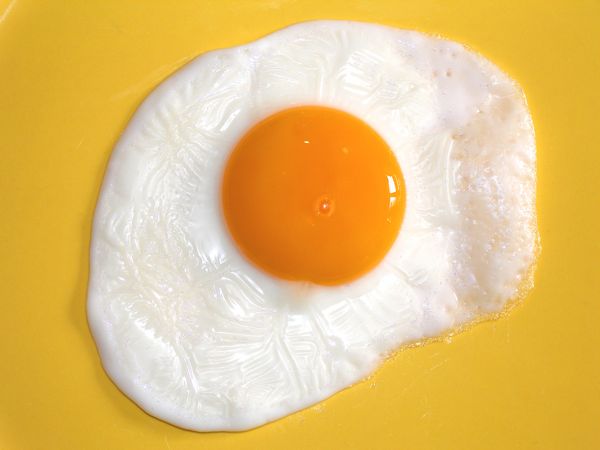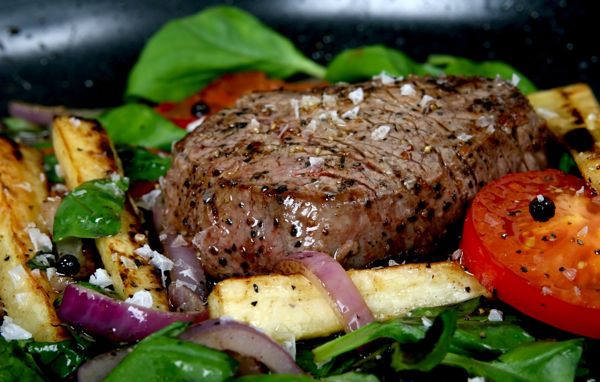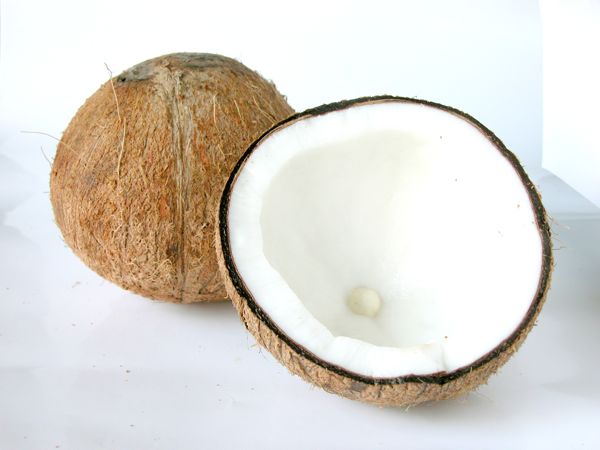
The name makes us cringe. It strikes fear into the hearts of men, women, and children. Our doctors scorn us for it. “Experts” say we need to keep a close eye on it after our thirty-fifth birthday. But what the heck is it? Good cholesterol? Bad cholesterol? What’s a triglyceride?
Most of our adult life, we’re told that this “thing” called cholesterol is an evil demon that clogs our arteries. It’s usually spoken in the same sentence as heart disease, cancer, and stroke. Google the word “cholesterol” and you will get 105,000,000 results. It isn’t any wonder that our heads start to spin and our blood pressure rises every time the doctor mentions the “C” word.
But how many of us actually know what cholesterol is? What it’s made of? How it’s produced? Why do we fear cholesterol? I’ll tell you why, but first we need to have a basic understanding of what it is so that your next check up is a little more enjoyable and that you can make some wiser decisions. Thank me later.
What is cholesterol?
First, let’s get the basics out of the way so we can actually start debunking our fears of cholesterol. What is it? Without getting too in depth, cholesterol is a waxy, fat like substance that is naturally found in every cell and most parts of the body. As you read this, there is cholesterol all over your body. It is absolutely vital for our bodies to function optimally.
Cholesterol in the blood is controlled in two important places:
- the liver, where cholesterol is produced
- the intestines, where cholesterol is absorbed
It is the essential building block for all our sex hormones as well as the hormones made and released by the adrenal glands. Cholesterol also protects and insulates nerve fibers and builds and repairs cell membranes. Some even call it “nature’s Band-Aid.” Doesn’t sound so bad, does it?
Triglycerides
When our doctor gives us a blood test for cholesterol, triglycerides are also included. Think of triglycerides as the cousin of cholesterol, mired in the shadows but always a team player. They’re simply another form of a lipid or fat that circulates in our bloodstream and provides much of the energy for our tissues to function. They protect our organs from injury and provide insulation to maintain our body temperature. Sounds even better, right?
HDL vs. LDL
Because cholesterol can’t be dissolved in the blood, it along with triglycerides and other special proteins are transported in tiny packages called lipoproteins. Enter HDL and LDL. We hear about HDL and LDL the most. HDL and LDL stand for “high density lipoprotein” and “low density lipoprotein.”
HDL is considered the “good” cholesterol chemical because it carries cholesterol plaque away from the body’s arteries back to the liver where it can pass out of our system. LDL is considered “bad” because it carries cholesterol from the liver around the bloodstream, which could potentially cause a buildup of plaque.
What does a cholesterol blood test measure? A fasting blood test can measure cholesterol levels as well as triglyceride levels in our blood. The test, also called a lipoprotein panel or profile, can measure:
- total cholesterol and triglycerides
- total HDL
- total LDL
OK, so now what? Our doctors tell us that we need to keep our total cholesterol levels below 200 mg/dl and our LDL levels below 100 mg/dl to avoid cardiovascular risk. For HDL levels, above 60 mg/dl is the target number for optimal protection. Doctors can also take these numbers along with age, family history, and other risk factors and use them to estimate a ten-year cardiovascular risk for an individual.
This is known as a “Framingham risk score.” Our doctors proceed to tell us to “make some lifestyle modifications and take it easy on the fatty foods.” In most cases, they will even prescribe us a cholesterol lowering medication such as a statin, tell us our dose, and send us on our way. “Hey, you’re the doctor!” Sounds easy enough, right?
At risk for a heart attack?
But what if I told you that a new national study in 2009 has shown that a whopping 75 percent of patients hospitalized for a heart attack had cholesterol levels that would indicate they weren’t at high risk for a cardiovascular event based on current national cholesterol guidelines?
“Almost 75 percent of heart attack patients fell within recommended targets for LDL cholesterol, demonstrating that the current guidelines may not be low enough to cut heart attack risk in most who could benefit,” said Dr. Gregg C. Fonarow, Eliot Corday professor of cardiovascular medicine and science at the David Geffen School of Medicine at UCLA and the study’s principal investigator.
Researchers analyzed data from 136,905 patients hospitalized for a heart attack nationwide between 2000 and 2006 whose lipid levels upon hospital admission were documented. This accounted for 59 percent of total hospital admissions for heart attack at participating hospitals during the study period.
The real cause of heart disease
Simply put, the traditional risk factors aren’t working. Yes, it’s important to understand and be aware of our total cholesterol, especially LDL and HDL, but this is just the beginning. The unfortunate truth is that the cholesterol numbers most conventional physicians measure today are becoming increasingly irrelevant. Instead of just looking at the total number of HDL and LDL in our blood, we need to take a look at the cholesterol particle size. The real question our doctors should be asking is, “Do you have small or large HDL or LDL particles?” Small, dense particles are more atherogenic (more likely to cause the plaque in the arteries that leads to heart attacks) than large, buoyant, fluffy cholesterol particles. These smaller particles can sneak through the tiny holes in the walls of our arteries, causing an atherogenic response. Our health risk has less to do with our cholesterol numbers than it does with the quantity and size of the cholesterol particles.
We need to start asking our physicians about an “advanced lipid profile.” Thankfully, some doctors are already starting to suggest that it should replace both LDL and non-HDL cholesterol as both a screening test and a target of treatment. Advanced lipid testing can identify additional risk factors of coronary heart disease that standard blood cholesterol tests typically don’t.
For example, one kind of lipoprotein called Lp(a), also known as “lipoprotein little a,” may be important in certain people with heart disease. This is a fairly large molecule, but it tends to be easily oxidized (remember that oxidized cholesterol is much more toxic). Furthermore, there is a protein “tail” that can stimulate blood clotting.
The following is a checklist of the major biological risk factors that can be ascertained with advanced lipid testing, including genetic markers and inflammatory markers.
- Lipid profile (total cholesterol, HDL, LDL, triglycerides)
- HDL subtype (there are five HDL subtypes)
- LDL subtype (there are seven LDL subtypes)
- Homocysteine level (increases oxidative stress affecting endothelial function and causes vascular damage)
- Lipoprotein(a)
- Fasting insulin
- High-sensitivity C-reactive protein (associated with increased risk of cardiovascular disease)
- Apoprotein B (high levels are associated with heart disease)
- Apoprotein A1 (associated with HDL levels and protects against cardiovascular disease)
- Fibrinogen (when associated with elevated LDL, the risk of cardiovascular disease is six times greater)
What makes an advanced lipid profile even more interesting and worthwhile is that not all of these risk factors are treated equally. While some of the genetic markers like KIF 6 (a protein involved in cellular transport) is treated with a statin, the majority of the inflammatory markers can be improved by optimizing lipids through a statin, niacin, a low glycemic diet, and exercise.
Another example is Apolipoprotein E (APOE), which is associated with lipoprotein metabolism. APOE has three major isoforms—ApoE2, ApoE3, and ApoE4. All three play a role in influencing the risk of cardiovascular disease. However, only ApoE4 has a significant role in developing atherosclerosis, Alzheimer’s disease, and impaired cognitive function. How is this genetic marker treated? The answer is a low fat nutrition plan with less than 20 percent fat calories.
What’s disturbing is that conventional physicians measuring our cholesterol are quick to pull the trigger on prescribing powerful cholesterol lowering medications when sometimes all we need is a lifestyle change. Statins are now the number one selling class of drugs in the nation while new “super drugs” are created every day in an attempt to lower cholesterol numbers. At the same time, health care costs are jacked up billions of dollars as millions of new prescriptions are written every day.
Sally Fallon, the president of the Weston A. Price Foundation, and Mary Enig, PhD, an expert in lipid biochemistry, have gone so far as to call high cholesterol “an invented disease,” a ‘problem’ that emerged when health professionals learned how to measure cholesterol levels in the blood.”[iii] And this explanation is spot on.
The sad truth is while more drugs are being prescribed and health care costs are skyrocketing, heart disease is still on a steady incline. In fact, statins have been shown to even increase the risk of heart failure. More studies are coming out showing just how unhealthy lowering cholesterol might be, particularly by the use of statin drugs. In fact, some people might actually be better off with high cholesterol levels. Remember, cholesterol plays a major role in repairing damaged cells. Could it possibly be that individuals with high levels of cholesterol also have high levels of inflammation? Here’s a news flash—you have high cholesterol because your immune system is damaged from all the refined carbohydrates, processed meat, and trans fats that you’ve been eating. The cholesterol is there to do a job—help your body heal and repair.
Treat disease not symptoms
The increasing cost of health care is a perfect example of doctors treating the symptoms, not the disease. These “super drugs” don’t address the fundamental source of heart disease. Taking a pill won’t fix the problems that are pushing us along the steady incline to pathology. After all, we can’t spell the word pathology without the word path, and the path we’ve been following to cure heart disease has been negligent. Cholesterol has officially mushroomed into a trillion dollar business that has comprised the lives of almost everyone. Heck, why doesn’t McDonald’s just start including statins with every purchase of a Happy Meal? Now that’s a way to lower health care!
Seeing the opportunity, Big Pharma did a really good job of scaring us to death about foods that our ancestors have thrived on for eons. We’re being told to limit our consumption of foods such as eggs, chicken, fish, and nuts because they’re high in cholesterol or worse—go on statins to reduce our blood cholesterol. This is blasphemous! Dietary cholesterol from raw, naturally occurring whole foods isn’t even close to being the culprit. Our bodies produce three to four times more cholesterol than the cholesterol intake we receive from our diets. Are you still throwing away those egg yolks? I’ll go out on a limb here and argue that we should consume more of these natural whole foods high in cholesterol and stop our consumption of processed fats, grains, sugar, and high fructose corn syrup. Maybe then our cholesterol levels will return to “normal.”
We need to start becoming more educated on the relationship between cholesterol and heart disease. We need to become more prudent and thorough with our blood tests. We need to understand the difference between a symptom-based plan and a foundational, lifestyle change. It’s time to finally admit it—cholesterol isn’tthe major culprit in heart disease.
So there you have it, the reasons why high cholesterol is a worry that many of us simply don’t need to have. I urge everyone to try making a few lifestyle changes before risking your health with cholesterol lowering drugs. Exposing the cholesterol scam and pinpointing the real cause and solution for heart disease needs to happen now. To sum it up, I’ll leave everyone with eight tips that I picked up from Dr. Joseph Mercola on how to naturally lower cholesterol.
How to lower your cholesterol naturally
1. Make sure you’re getting plenty of high quality, animal-based omega 3 fats. I prefer those from krill oil. New research suggests that as little as 500 mg may lower your total cholesterol and triglycerides and will likely increase your HDL cholesterol.
2. Reduce, with the plan of eliminating, grains and sugars in your daily diet. It’s especially important to eliminate dangerous sugars such as fructose. If your HDL/cholesterol ratio is abnormal and needs to be improved, it would also serve you well to virtually eliminate fruits from your diet, as those are also a source of fructose. Once your cholesterol improves, you can gradually reintroduce it to levels that don’t raise your cholesterol.
3. Eat a good portion of your food raw.
4. Eat healthy, preferably raw, fats that correspond to your nutritional type. These include:
- Olive oil
- Coconut and coconut oil
- Organic raw dairy products (including butter, cream, sour cream, and cheese)
- Avocados
- Raw nuts
- Seeds
- Eggs (lightly cooked with yolks intact or raw)
- Organic, grass-fed meats
5. Get the right amount of exercise. When you exercise, you increase your circulation and the blood flow throughout your body. The components of your immune system are also better circulated, which means your immune system has a better chance of fighting an illness before it has the opportunity to spread.
6. Avoid smoking and drinking excessive amounts of alcohol.
7. Address your emotional challenges. I particularly love the emotional freedom technique (EFT) for stress management.







